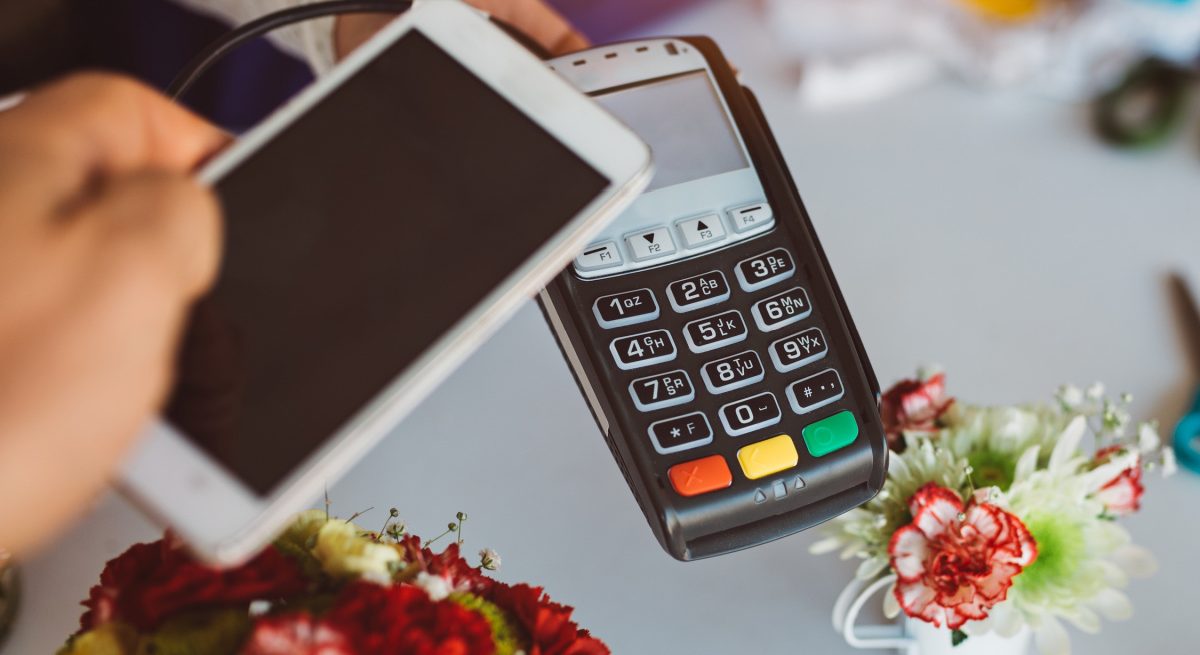Is Contactless Forever?
5 Min Read By Stephanie Trovato
The COVID-19 pandemic has brought endless changes to the restaurant industry, but perhaps the most significant has been the rise of the contactless dining experience. The pandemic forced restaurants to adapt to not only a new, leaner business model but also to new consumer behavior. With customers opting for alternatives to dine-in, restaurants adapted to build solutions to offer takeout, delivery and curbside pickup options.
It is safe to say that the future of restaurants has been altered forever. This has led to new transformations by restaurant owners. It is no longer a question of how to ensure the survival of your business. Instead, it is a question of how to grow your business stronger than it was in the pre-COVID era, with the answer quite possibly being contactless dining.
What Is Contactless Dining?
Contactless dining has become one of the trendiest terms around restaurants since the start of the pandemic. But what is contactless dining exactly?
The concept goes far beyond a simple online menu or QR code. Contactless dining really has three core pillars.
Menus
Every dine-in experience starts with a menu, so having yours available online is the first step to going contactless. However, restaurants have discovered that not all online menus are made the same.
So what makes a good contactless menu? There are three defining traits.
-
A good mobile experience
-
The ability to update it frequently
-
An easily shareable link or QR code
The good news is that it’s never been easier for restaurants to design professional-looking, state-of-the-art online menus. Several solutions have popped up over the past year that allows you to customize menu templates and share them online in minutes.
Ordering
Creating a contactless ordering experience for guests at your restaurant is important in order for your business to stay competitive and profitable. Restaurants have endless third-party ordering app options, but those do come with a price, approximately five-twenty percent of each sale.
Every restaurant should look into hosting its own online ordering. POS and restaurant management software have made it easier than ever to set up your own system and cut out the need to reach out to a third-party whenever there are issues.
Payment
The final step to contactless dining, which was popular across the industry even before the pandemic, is cashless payments. This allows customers to pay in the safest, most convenient way possible. Whether that’s a credit card, Paypal, Apple Pay, or another service, customers expect to be able to pay their way. Contactless payment eliminates a potential hurdle between you and more sales.
How Can You Enhance Your Contactless Dining?
Contactless dining can impose a challenge of creating a memorable customer experience without actually engaging with customers. However, there are several ways you can enhance the contactless dining experience to ensure customer satisfaction remains high and your restaurant runs smoothly and efficiently. Here are some ideas to get you started.
QR Codes
QR codes have been around since 2010, but didn’t become widely used until the past few years. Then came the pandemic, and usage rates skyrocketed 750 percent in the last year and a half as restaurants turned to the technology to continue operating safely with contactless service.
Now that many restrictions have been lifted and restaurants around the country are welcoming back diners in full force, QR codes are no longer viewed primarily as a safety solution. Allowing guests to view menus via QR code means less paper waste for restaurants, and more opportunities to improve their online menu design.
Even though QR codes are likely here to stay, restaurants shouldn’t get rid of their hardcopy menus just yet, as QR code menus still aren’t widely accessible to all guests, primarily those without a smartphone or QR reader capabilities. There are also some concerns around the information QR codes collect, and while that can be a great sales insight for restaurants to help them analyse customer needs and habits and cater more to their requests, some diners are hesitant of the technology.
Apps
By pivoting throughout the pandemic, restaurants rode the wave of mobile ordering options and the growing quantity of consumer app orders. Yet, it turns out that wave was more of a tsunami of change since it doesn’t seem like pre-COVID preferences are coming back anytime soon.
OpenTable reported a 44 percent growth rate from 2019 to 2021 in the U.S. in the online food delivery sector. Accelerated by the pandemic, digital restaurant delivery (mobile apps, online orders, text message orders) increased by 123% in the U.S. from 2019 to 2020.
Landing Pages
Restaurants have discovered that they don’t need big, bulky, multi-page websites. What they need is a simple, streamlined web presence that can fit in the palm of their customer’s hands, also known as a landing page.
A landing page is a branded website that only displays your most important links. It’s designed specifically for mobile usage, can be updated easily at any point, and can be linked directly to a QR code.
New Trends In The Contactless Dining World
The food industry continues to evolve in ways of making things faster and easier for consumers. Starbucks recently launched a Pickup store in partnership with Amazon go.
“Our goal with this new store concept is to give our customers the ability to choose which experience is right for them as they go through their day, whether it is utilizing the Starbucks and Amazon apps to purchase food and beverages on the go or deciding to stay in the lounge for the traditional third place experience Starbucks is known for.” Katie Young, senior vice president of global growth and development at Starbucks said in a statement.
These types of convenient partnerships have carried over in the hotel industry as well. Hospitality tech company Criton has partnered with restaurant tech firm Hungrrr to add a safe, contactless food ordering system to its hotel guest app. The app allows guests to self-order and pay for food and drinks, both in the hotel restaurant or in-room, from their mobile device. This solution was designed to help hoteliers drive food-and-beverage revenues while also safeguarding the health of their guests.
With the need for a convenient way to order growing, Grubhub has created a partnership to extend it’s restaurant network to Transact’s CampusCash program to offer universities an off-campus meal spending program for students. The CampusCash program now allows its over 12 million students to use their cashless payments at over 300,000 restaurants nationwide.
How The Restaurant Industry Has Changed Forever
Once seen as a job killer, automation has saved and will continue to serve an understaffed food industry. With nearly 7,000 hospitality employees leaving their jobs since the start of the pandemic, restaurants continue to operate with a reduced team. Amid this shortage, restaurant operators and customers are seeing the value in automation technology.
As 77 percent of consumers return to dining out at least once per month, running a smooth and efficient operation has become more crucial than ever. These technologies have provided the stability and efficiency of restaurants and the overall food industry to remain up to par with consumer expectations.
The pandemic forced a tremendous amount of change in the hospitality industry, with 90 percent of U.S. merchants noting they feel that technology has helped their business survive the last two years.
While there have been many restaurants that have closed to the effects of the pandemic, the ones that are still open have found new ways to improve their customer experience, using technology as an aide, proving that contactless may be forever.


